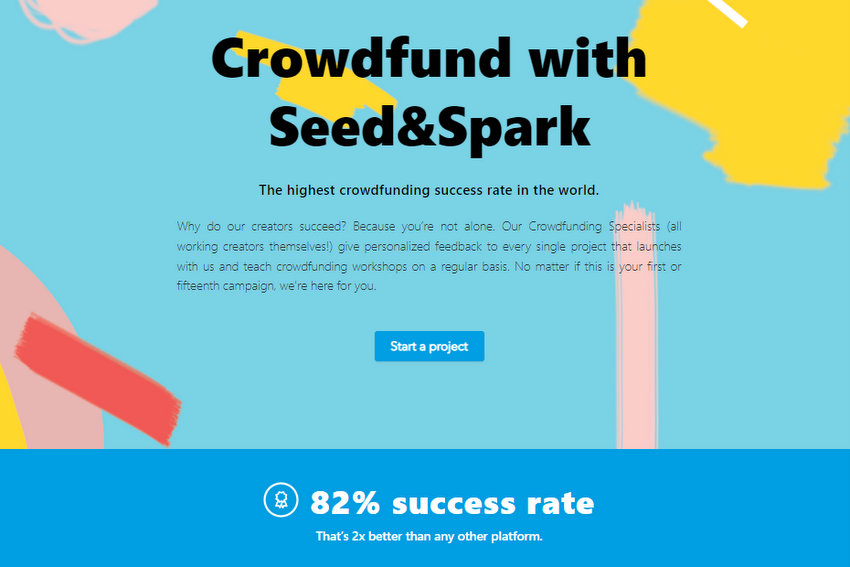
Many filmmakers struggle to find success, but why? Is it that their movie ideas suck? No, not usually. Is it that the movies are unappealing to watch? Sometimes, but that’s not usually the issue. The most common problem is that they come up with an idea, film the scenes, edit the movie, and then… Then they try to figure out where it fits into one of the planet’s most complex and competitive marketplaces, cinema. They create the solution and then look for a problem it solves. If that’s not backward, I don’t know what is.
Instead, you should study the marketplace and find a place your film can occupy first. Then you can round out the idea, including the plot and casting, following up with creating marketing materials and filming the movie. This way, once the movie is completed, there are several traffic streams through which the project can be found, plenty of promotional materials can pique a viewer’s interest, and there are already interested and motivated viewers ready to see the result of your hard work.
What Is Film Marketing?
In short, film marketing is the collection of actions a filmmaker or studio takes to research the cinema market and promote a project. It involves asking potential audience members for feedback, formulating realistic customer profiles, creating compelling marketing materials, and advertising your projects to a broad yet connected audience.
The best way to ensure you’re performing this in a way that will help your film stand out and get noticed is to flesh out and execute an excellent film marketing plan. A film marketing plan is a set of actions you need to take in a specific order and with clear intent, culminating in a handful of deliverables and outreach modes that will drive interest in your film into the marketplace.
If done correctly, a film with a meager budget can manage to reach tens or hundreds of thousands of viewers using organic promotion methods like Google searches, Instagram posts, and YouTube videos. However, some films also use outbound marketing techniques like paid ads on television networks to promote their projects. If you’re unsure where to start building a film marketing plan for your film, you’re in the right place!
The Steps to Create Your Film Marketing Plan
1. Define your film’s target audience
2. Build a film website
3. Create a teaser and a trailer
4. Build a presence on social media platforms
5. Optional: Use a crowdfunding campaign
6. Build an Email and/or SMS Marketing sequence
7. Determine your amount and channels of ‘Media Buy’
1. Define your film’s target audience

One of the earliest things you need to do to ensure your film resonates with a group of people is to have them in mind when you create and promote the film. An easy way to figure out who you should target with your movie is to look at 3 to 5 films similar to your idea and take note of what kinds of audiences they have. While you’ve probably been told that it’s a bad idea to compare yourself to others, it’s more important to figure out who actually watched films similar to yours to help you determine who will watch your movie.
2. Build a film website

You need to promote your film, and a website is one of the most effective and professional ways to do this. It could make your official marketing materials appear to potential viewers when searching for the title of your film. A website also gives you a great place on the internet to which you can link people when they inquire about the project. This is a great place to release your teaser, trailer, and other marketing materials like posters and photos.
3. Create a teaser and a trailer
The example of a trailer: Quatre Mains Trailer | Directed by Lander Haverals
A great way to build hype for your film is to release a high-quality teaser before you finish producing the film. This is typically about 60 seconds long and may include renders, videos, photos, and music created during the film’s production. However, they may also be released before production begins. It mainly depends on your access to resources and what you want the teaser to look and sound like.
A trailer, like a teaser, is a short video snapshot of the film you’ll be releasing. Unlike a teaser, trailers are typically about 2-3 minutes in length and feature a three-act structure. A compelling scene from each plot’s beginning, middle, and end is an excellent place to start. Trailers are usually released before the film is officially released, but after filming and at least some post-production editing has been completed. This is because you’ll need some juicy scenes for the trailer. You want to make sure you’re putting your best foot forward and promoting the film with something that is both exciting and representative of the film.
4. Build a presence on social media platforms

Over the last 10 years, social media has become a dominant form of online organic promotion. Unlike your website, which will primarily elicit traffic from people who are already aware of your film, social media can help you reach parts of your ideal audience that are not previously aware of your film’s existence. A few public social media profiles would make for an excellent addition to your film marketing campaigns.
Great things to put on social media accounts include posters, promotional images, interviews, and making-of video clips. Managing too many social media accounts can become tedious and nearly impossible for individuals or small studios. Unless you have extra hands to help with engagement and content repurposing, it’s recommended to stick with two solid platforms. For example, YouTube and Instagram, in addition to your website, can provide outstanding video and photo sharing capabilities without bogging you down, managing 5-8 platforms simultaneously.
5. Optional: Use a crowdfunding campaign

For indie filmmakers, a large budget is hard to come by. Significant investments would need to be made, usually in the form of corporate bankroll. This is rarely possible, so these filmmakers have limited options. Find individual investors who wish to put large sums into the film, come up with the money yourself, or use a crowdfunding campaign.
A crowdfunding platform such as Seed & Spark, Indiegogo or Kickstarter can provide you with a fantastic multi-purpose tool for your film. The first purpose is to acquire the funding needed to produce and distribute the film. However, to an extent, to properly reach your funding goals, you must promote the movie a fair bit. This may come from backers directly from the platform. However, it may also come from your external outreach leading audience members to the crowdfunding campaign
6. Build an Email and/or SMS Marketing sequence

The most cost-effective way of promoting anything these days is through direct messaging. This takes many forms, but practically all your audience members will have either a smartphone or an email address. Likely, they will have both and check each one regularly. It also costs nothing to acquire someone’s email address or phone number; you just have to provide them with some value and then ask for it! This can come in the form of your teaser or trailer on your YouTube channel or website, then allow them to sign up for updates!
You don’t want to be too salesy with your email marketing sequence, but your email subscribers have already expressed direct interest in your film. Don’t be shy to update your email list about your film or the production process. This is what they want. Give them 3-7 updates before offering them exclusive deals on tickets to your film, copies of the movie, or anything else you want to monetize the project with!
7. Determine your amount and channels of ‘Media Buy’







